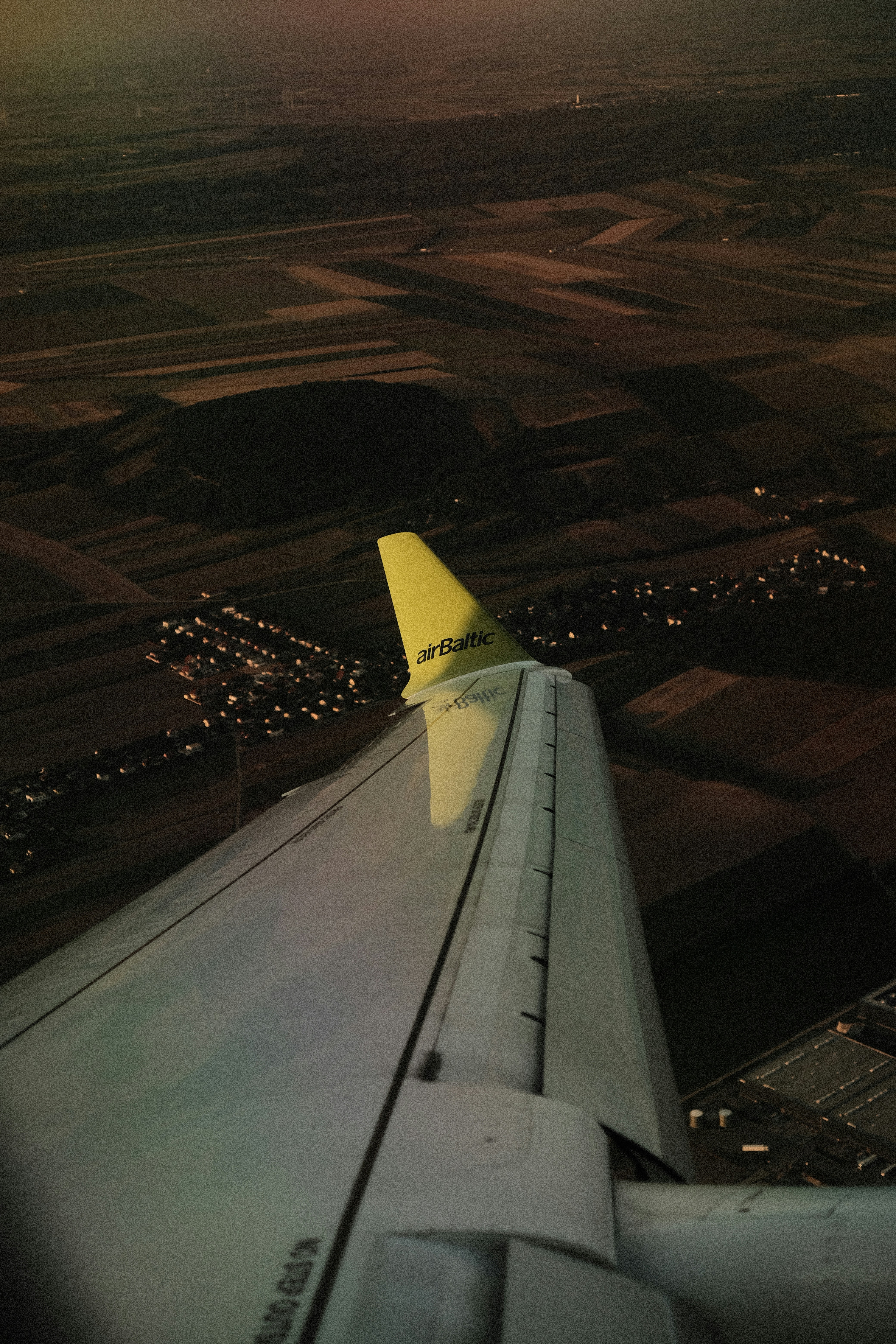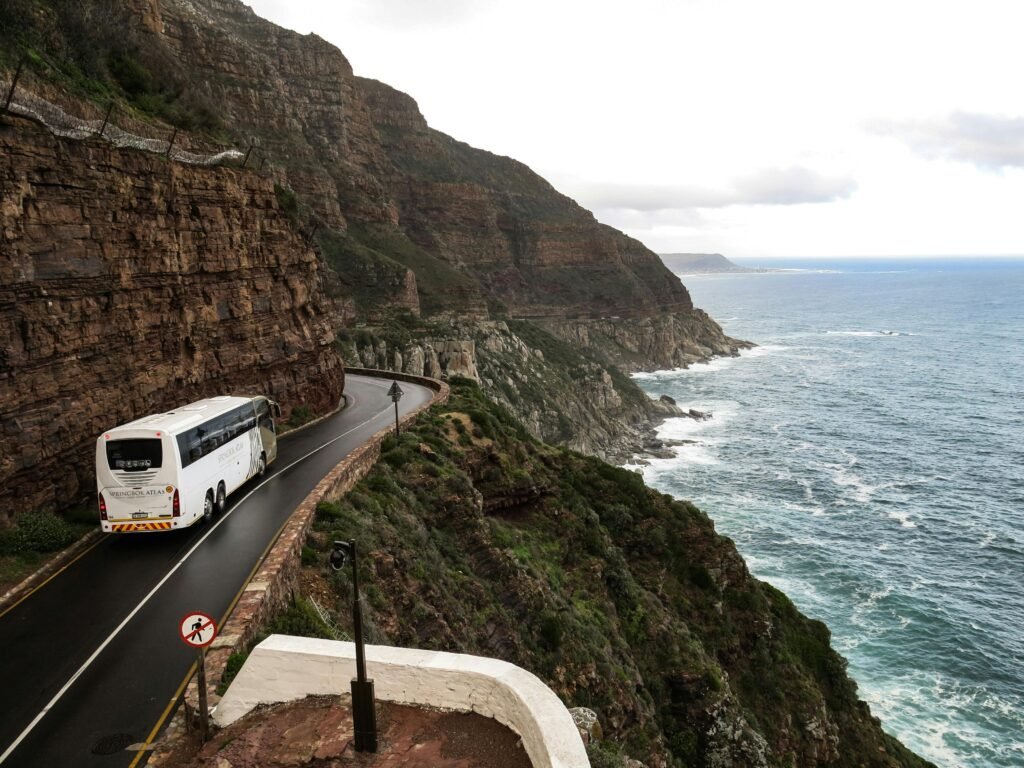Introduction to Budget Travel in the Baltics
The Baltics, comprised of Estonia, Latvia, and Lithuania, represent a captivating travel destination that combines rich history, diverse culture, and breathtaking landscapes, all while being remarkably affordable. As travelers increasingly seek budget-friendly options, this region stands out with its low-cost transportation, reasonably priced accommodations, and an array of free or inexpensive attractions that cater to varying interests and activities.

One of the most appealing aspects of traveling in the Baltics is the ease with which visitors can traverse the three countries. Each nation boasts a well-developed and efficient public transport system, enabling budget-conscious travelers to navigate from city to city without incurring excessive costs. For instance, bus services like Lux Express and Eurolines provide comfortable and affordable connections between major cities such as Tallinn, Riga, and Vilnius, allowing visitors to immerse themselves in the local culture at a leisurely pace.
Food enthusiasts will also find plenty of budget options in the Baltics. Traditional eateries and local markets offer authentic culinary experiences at a fraction of the price found in many Western countries. From hearty Estonian rye bread to savory Latvian black balsam and Lithuanian cepelinai, travelers can indulge in remarkable flavors without straining their wallets. Furthermore, street food scenes in urban areas like Tallinn and Riga provide variety and convenience for those looking to eat on the go.
In addition to transportation and food, the Baltics’ historical sites and natural attractions are abundant and often free to access. From the medieval architecture of Tallinn’s Old Town to the serene shores of the Curonian Spit, there are countless opportunities for exploration. By prioritizing economical options, adventurers can experience the unique offerings of Estonia, Latvia, and Lithuania without overspending, making it easier to enjoy all that this enchanting region has to offer.
Affordable Transportation Options
Traveling through the Baltics offers a variety of budget-friendly transportation options that can significantly reduce travel expenses while still providing an enriching experience. The public transportation systems, including buses and trains, are both efficient and cost-effective for travelers. Cities like Tallinn, Riga, and Vilnius feature well-established bus networks that connect major attractions and neighborhoods, making it easy to explore without spending a lot. Furthermore, local trains connect various regions and towns within the Baltics, allowing for affordable day trips that showcase the beautiful landscapes and cultural hotspots.
When utilizing public transportation, it is advisable to purchase passes which often offer unlimited travel over a set period. Search for special deals or discounts that may be available, especially during off-peak seasons or for students and seniors. Smartphone apps can also enhance the experience by providing real-time updates, schedules, and route mapping, making navigation straightforward and user-friendly.

For those seeking alternatives, ridesharing services, like Bolt and Uber, are prevalent in larger cities and often provide competitive pricing for short distances. Biking is an excellent option as well, with many cities offering bike rental services or shared bikes at nominal fees. This not only fosters a sense of adventure but also permits a leisurely pace, allowing travelers to soak in the scenery.
Moreover, walking tours can be an enriching way to explore urban environments. Many local organizations offer free or donation-based guided tours that provide insights into history and culture, enhancing one’s understanding of the region. By combining public transportation with alternative modes, travelers can navigate the Baltics economically while enjoying all the experiences this diverse region has to offer.
Eating on a Budget: Where to Find Affordable Meals
Exploring the culinary landscape of the Baltics can be a delightful experience, even for those traveling on a budget. The food scene across Estonia, Latvia, and Lithuania is rich and diverse, offering a variety of options that cater to different tastes without straining your finances. One of the most rewarding ways to indulge in local cuisine is through street food. In major cities, vibrant markets and food stalls serve traditional dishes such as ‘piragi’ in Latvia and ‘cepelinai’ in Lithuania at prices that are manageable for budget travelers.

Local markets are another excellent choice for affordable dining. These bustling hubs often feature vendors offering fresh produce, homemade goods, and ready-to-eat meals at reasonable prices. For instance, the Central Market in Riga is an iconic destination where you can sample regional foods while enjoying the atmosphere. Not only does this allow you to experience authentic Baltic flavors, but it also provides an opportunity to engage with local culture, which can be a highlight of your trip.
When it comes to restaurants, look for establishments that are frequented by locals rather than those that cater primarily to tourists. Many local eateries provide daily specials or lunch menus that offer significant savings. These often include traditional dishes and give you a chance to try authentic meals at a fraction of the cost. Additionally, opting for dinner during weekdays may yield better deals compared to weekends. Always keep an eye out for food festivals and local events, where you can find special offers and tasting menus designed with budget-conscious diners in mind.
To encapsulate your Baltic culinary adventure affordably, embrace local flavors with a willingness to explore less touristy venues. By prioritizing street food, local markets, and neighborhood restaurants, you can savor the rich culinary traditions of the Baltics while adhering to your budget.
Budget Accommodation: Best Places to Stay
Finding budget accommodation in the Baltic States can significantly enhance your travel experience without straining your finances. Travelers will discover an array of affordable options ranging from hostels and guesthouses to budget hotels and vacation rentals. Hostels, for instance, are a popular choice among budget-conscious travelers. They typically provide a vibrant atmosphere, social interactions, and shared facilities, making them ideal for meeting fellow explorers.
Guesthouses often offer a more local experience, providing a cozy environment and home-cooked meals at reasonable rates. They can also help travelers connect with local culture and traditions. Budget hotels present an excellent option for those seeking comfort and convenience at a lower price. These hotels are usually well-equipped with essential amenities while still being affordable compared to more luxurious accommodations.

Moreover, when planning your trip, it is advantageous to book accommodation well in advance. This can often lead to significant savings, especially during the peak tourist season when prices are likely to soar. Utilizing online platforms dedicated to comparing prices allows travelers to uncover the best deals. Staying in less touristy areas also brings benefits; these neighborhoods often feature lower prices with the added bonus of providing insight into the local way of life.
For those looking for unique and memorable stays, consider options like cottages or eco-friendly lodges that might be available in rural areas or near national parks. These types of accommodations not only offer distinctive experiences but often promote environmental stewardship and sustainability. By choosing such options, travelers can enjoy the beauty of the Baltics while also being mindful of their budget and ecological footprint.
Sightseeing on a Shoestring: Free and Low-Cost Attractions
Traveling through the Baltics does not necessitate a hefty budget, particularly when it comes to sightseeing. Each of the three Baltic states—Estonia, Latvia, and Lithuania—offers a multitude of attractions that are either free or low-cost, making it feasible for budget-conscious travelers to explore rich cultural and historical experiences.
In Tallinn, Estonia’s capital, visitors can wander through the enchanting streets of the Old Town, a UNESCO World Heritage site, without spending a cent. Its medieval architecture, cobblestone streets, and iconic landmarks like the Alexander Nevsky Cathedral are all accessible for free. Additionally, the city’s panoramic views from Toompea Hill provide a stunning backdrop for photography enthusiasts.
Riga, the vibrant capital of Latvia, also boasts a number of low-cost activities. The city’s parks, such as the charming Vērmanes Garden and Bastejkalna Park, offer peaceful retreats ideal for leisurely strolls or picnics. On certain days, many museums in Riga offer discounted or free admission, wherein visitors can enjoy exhibits that showcase the region’s art and history. The Latvian National Museum of Art, for instance, often has free entry on the first Saturday of the month.
Meanwhile, Vilnius, Lithuania’s capital, features the picturesque Gediminas Castle, which has a modest entry fee for those wishing to climb to the top. However, stunning views of the city are available freely from various viewpoints scattered around the city, including the famous Užupis district, known for its quirky artistic atmosphere. Local festivals, outdoor markets, and cultural events provide additional avenues for enjoyment at little or no cost.
Outdoor activities, such as hiking in the beautiful national parks of the Baltics, are also excellent budget-friendly options. Susedis National Park in Latvia and Aukštaitija National Park in Lithuania offer breathtaking landscapes and well-marked trails for nature enthusiasts. Ultimately, the Baltic region is rich in options for sightseeing on a budget, ensuring that every traveler can have an enriching experience without overspending.
Money-Saving Tips for Budget Travelers
Traveling to the Baltics can be a rewarding experience without a hefty price tag. To help budget travelers make the most of their journey, here are practical tips that focus on cost-saving strategies while ensuring an enjoyable visit.
First, managing currency exchange is crucial for maximizing your budget. The local currency in Estonia, Latvia, and Lithuania is the Euro, so it’s advisable to avoid exchanging money at airport kiosks, which often charge inflated rates. Instead, utilize local banks or ATMs that provide better exchange rates. While withdrawing cash, check if your bank charges foreign transaction fees to prevent unexpected expenses. Additionally, carrying a small amount of cash is helpful when visiting local markets or smaller establishments that may not accept cards.
Using credit and debit cards wisely can help save on unnecessary charges. Opt for cards that don’t impose foreign transaction fees and offer favorable exchange rates. Contactless payments have gained popularity in the Baltics, facilitating easy transactions. However, ensure you inform your bank of your travel plans to avoid any disruptions from potential fraud alerts.
Travelers may find student or group discounts advantageous, especially if visiting with a large party. Many attractions and public transportation systems offer reduced rates for students, seniors, or groups, making it easier to stick to a budget. It’s wise to always carry relevant identification to avail these discounts.
Lastly, planning ahead by creating a daily budget can help control your spending. Outline expected costs for food, transportation, and activities and allow some leeway for spontaneous experiences. Keeping track of your expenditures can prevent overspending and help maintain resourcefulness throughout your trip.
Cultural Insights: Traveling Responsibly and Respectfully
Traveling in the Baltics presents an opportunity to engage with rich and diverse cultures. Understanding and respecting local customs and traditions is essential for fostering positive interactions with residents. When visiting Lithuania, Latvia, and Estonia, it is advisable to conduct some prior research into each country’s cultural heritage and social norms. For example, greetings can vary significantly; while a firm handshake is common, personal space preferences and eye contact frequencies may differ among the locals. Being aware of these subtleties demonstrates a willingness to engage respectfully.
Another vital aspect of traveling responsibly is making an effort to support local businesses. By dining at family-run restaurants, shopping at local markets, and utilizing services from local guides, travelers can positively impact the communities they visit. This not only enriches the travel experience but also ensures that the economic benefits of tourism are more likely to stay within the local area. Additionally, consider learning a few basic phrases in the local languages. Even simple greetings in Lithuanian, Latvian, or Estonian can go a long way in building rapport.
Furthermore, eco-friendly travel practices should be an integral part of any trip to the Baltics. Engaging in sustainable tourism activities, such as using public transportation, minimizes your carbon footprint while exploring these beautiful countries. Opting for accommodations that prioritize sustainability is another way to contribute positively. When taking part in local tours or activities, seek options that emphasize conservation and respect for the environment and cultural heritage, thus ensuring that the natural beauty of the Baltics is preserved for future generations.
In essence, approaching your travels with cultural sensitivity and a commitment to responsible tourism not only enhances your experience but also ensures that your budget travel positively contributes to the communities visited. Taking these steps fosters meaningful connections and promotes a greater understanding of the unique cultural landscape of the Baltics.
Sample Budget Itinerary for a Baltic Adventure
Planning a week-long journey through the Baltics can be both exciting and economical. Below is a sample budget itinerary designed to provide a rich experience while maintaining affordability. This itinerary encompasses three Baltic states: Estonia, Latvia, and Lithuania, and offers diverse activities, transportation means, accommodation options, and dining alternatives that cater to different budgets.
Day 1: Arrival in Tallinn, Estonia
Begin your adventure in Tallinn, the capital of Estonia. Upon arrival, utilize public transport, which is an economical way to reach the city center. Consider staying in a budget-friendly hostel or guesthouse for around €20-€30 per night. Spend your day exploring the medieval Old Town, a UNESCO World Heritage site, where you can wander the cobblestone streets and visit landmarks such as Alexander Nevsky Cathedral and Toompea Castle. For dining, local eateries often offer traditional dishes for €10-€15.
Day 2: Tallinn to Riga, Latvia
On the second day, opt for a bus to Riga, which offers an affordable ticket price of approximately €15. The journey takes about 4-5 hours. Upon arrival, check in to a budget hotel or affordable Airbnb. Spend the afternoon at the Art Nouveau district, followed by a visit to the Central Market for local delicacies. Dinner in this area can be enjoyed for about €12.
Day 3: Discovering Riga
Dedicate this day to explore more of Riga. Visit the Freedom Monument and take a leisurely stroll along the Daugava River. Participate in a free walking tour that highlights the city’s history. For lunch, grab a meal at a local café for around €8. In the evening, consider experiencing Riga’s nightlife or attending a cultural event, which often has low-cost entry.
Day 4: Riga to Vilnius, Lithuania
Travel to Vilnius by bus for approximately €12. After settling into an affordable accommodation option, explore the historic Old Town and visit the impressive Vilnius Cathedral. For dinner, enjoy local cuisine with a meal priced around €10.
Days 5-6: Exploring Vilnius
Use these days to delve into Vilnius’ rich cultural scene, including the KGB Museum and the bohemian Uzupis district. Apply the same budget for meals and transportation throughout your stay. Look for various experiences like local markets or art galleries, which are often free or low-cost.
Day 7: Departure
On your final day, plan for either a return flight or bus back to Tallinn or Riga, depending on your departure arrangements. Utilize any remaining budget to purchase local souvenirs or enjoy one last meal in the Baltics. This sample budget itinerary emphasizes affordability and flexibility, allowing for adjustments based on personal preferences and financial considerations, ensuring a memorable Baltic experience.
Conclusion: Embracing the Adventure Without Overspending
Traveling in the Baltics does not necessitate a substantial financial commitment, as this beautiful region offers numerous opportunities for an enriching experience on a budget. Through careful planning and resourcefulness, travelers can immerse themselves in the local culture, savor traditional cuisines, and explore breathtaking landscapes without incurring excessive expenses.
It is essential for travelers to conduct thorough research and prioritize their needs when deciding on transportation, accommodation, and activities. Utilizing budget airlines and public transport can significantly reduce travel costs. Furthermore, opting for hostels or local guesthouses instead of luxurious hotels not only cuts down on expenses but also provides a chance to engage with fellow travelers and locals alike. Engaging in local cuisine at markets or small eateries often results in delicious meals at affordable prices, highlighting the richness of regional flavors while keeping expenditures manageable.

Additionally, embracing free or low-cost attractions can enhance the travel experience. Many cities in the Baltics feature stunning parks, historical sites, and vibrant street art that can be enjoyed without cost. Participating in local festivals or community events can also provide a deeper understanding of the culture while fostering connections with residents. Flexibility in one’s itinerary allows for spontaneous discoveries, which can lead to unexpected adventures without straining the budget.
In summary, it is indeed possible to explore and appreciate the Baltics without overspending. By embracing local culture, making informed choices, and remaining open to impromptu experiences, travelers can enjoy an unforgettable journey that honors both their wallet and their wanderlust.


